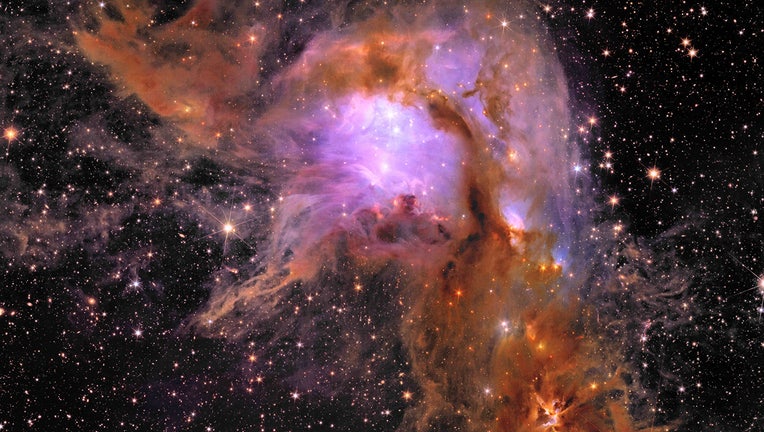Star nursery, far-off galaxies revealed in stunning new images from Euclid’s telescope

A filamentary orange veil covers a bright region of star formation. The background is dark, stippled with stars and galaxies ranging from small bright dots to starry shapes. The foreground veil spans from upper left to the bottom right and resembles
Beautiful new images into deep space were observed by the European Space Agency’s Euclid observatory, adding to its celestial collection.
One particularly stunning image of Messier 78 showed the vibrant star nursery enveloped in interstellar dust.
Euclid was able to capture images deep within the nursery, exposing hidden regions of star formations for the very first time.
Other images include NGC 6744 which is considered the "big brother" to the Milky Way, the cluster galaxy Abel 2764 and the Dorado galaxy group.
The images are a part of Euclid’s Early Release Observations, the ESA said, and "are at least four times sharper" than any photos taken by ground-based telescopes.
Euclid is able to cover large patches of the sky and look far into the universe using both visible and infrared light, the ESA explained.
ESA’s telescope targeted 17 astronomical objects and aims to uncover the secrets of the dark cosmos. Euclid’s survey hopes to reveal how and why the universe looks as it does today.
"Euclid will trace the hidden web-like foundations of the cosmos, map billions of galaxies across more than one-third of the sky, explore how our Universe formed and evolved over cosmic history, and study the most mysterious of its fundamental components: dark energy and dark matter," the ESA said.
This story was reported from Los Angeles.

